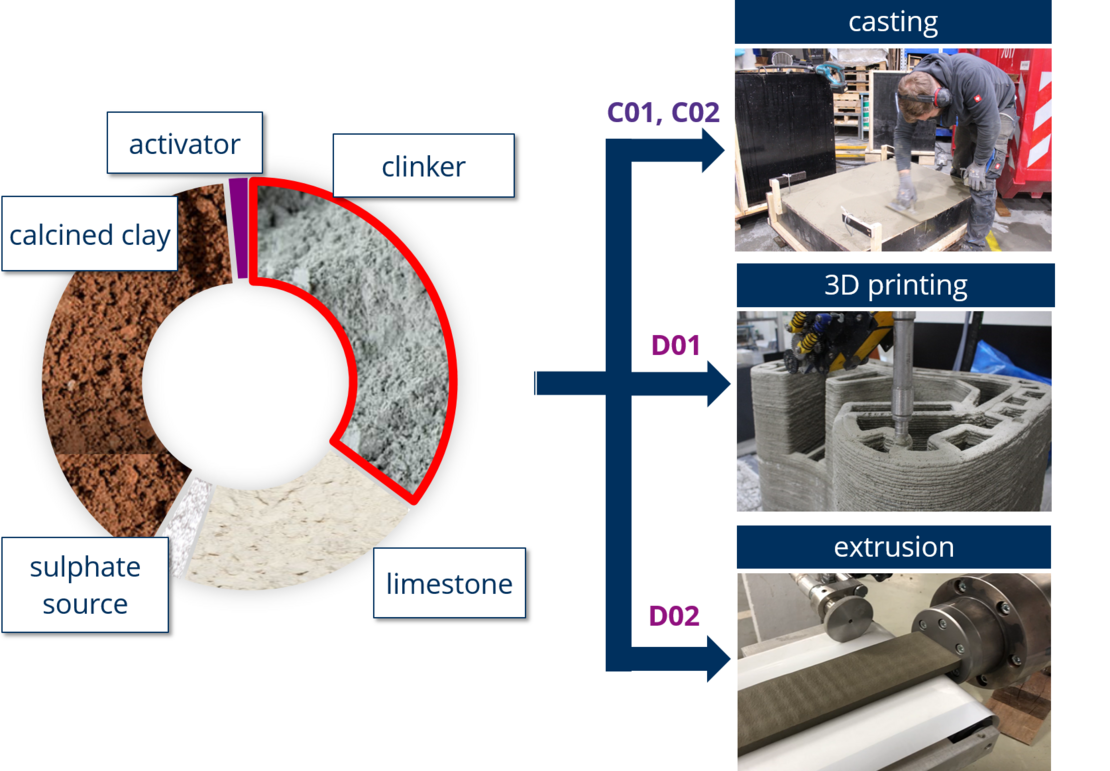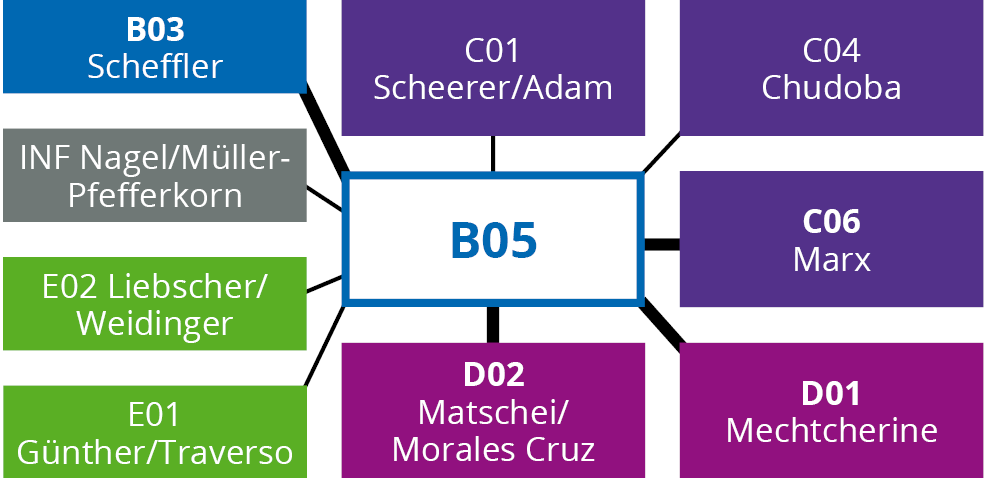Low to neutral CO2 binders for material-minimized carbon-reinforced concrete structures | Funding Period 2
Project B05 focuses on developing sustainable binders for carbon-reinforced concrete (CRC) elements. The core objective is to create a low-carbon binder concept suitable for various materials and manufacturing processes within the TRR 280 framework. Calcined clay and limestone powder are used as supplementary materials to develop composite cements with less than 40 wt% clinker. To enhance early strength, an alkali activation system with an accelerator (Na2SO4) and a retarder (Na-Gluconate) is employed. This system boosts early strength while preventing the late-age performance loss typical of highly alkaline systems. Additionally, CO2 curing is being studied to optimize both early strength and environmental impact.
The binder composition is extensively characterized both physicochemically and rheologically, with a focus on analyzing the effects of the activator and CO2 curing on phase composition and porosity. The rheological properties of the paste are correlated with its hydration structure. Furthermore, the influence of aggregates on the material properties is investigated. The goal is to establish scientific foundations for the necessary rheological properties and to develop thermodynamic and rheological models that enable performance-oriented material design for low-CO2 CRC.

Scientists
![Prof. Dr.-Ing. Thomas Matschei [Translate to English:] Thomas Matschei](/fileadmin/_processed_/d/1/csm_2024_D02_Matschei_b2ae8c156b.jpg)
D-52062 Aachen (Germany)
![Prof. Dr.-Ing. Viktor Mechtcherine [Translate to English:] Viktor Mechtcherine](/fileadmin/_processed_/d/c/csm_Mechtcherine_Quadratisch_19756c182d.jpg)
D-01062 Dresden (Germany)
![Dipl.-Ing. Silvia Reißig [Translate to English:]](/fileadmin/_processed_/d/9/csm_2024_B05_Rei%C3%9Fig_quadradtisch_ccc9b0e931.jpg)
D-01062 Dresden (Germany)
![M.Sc. Michael Wenzel [Translate to English:]](/fileadmin/_processed_/1/6/csm_2024_B05_Wenzel-quadratisch_f119e55d68.jpg)
D-52062 Aachen (Germany)
Kooperationen | Cooperations





